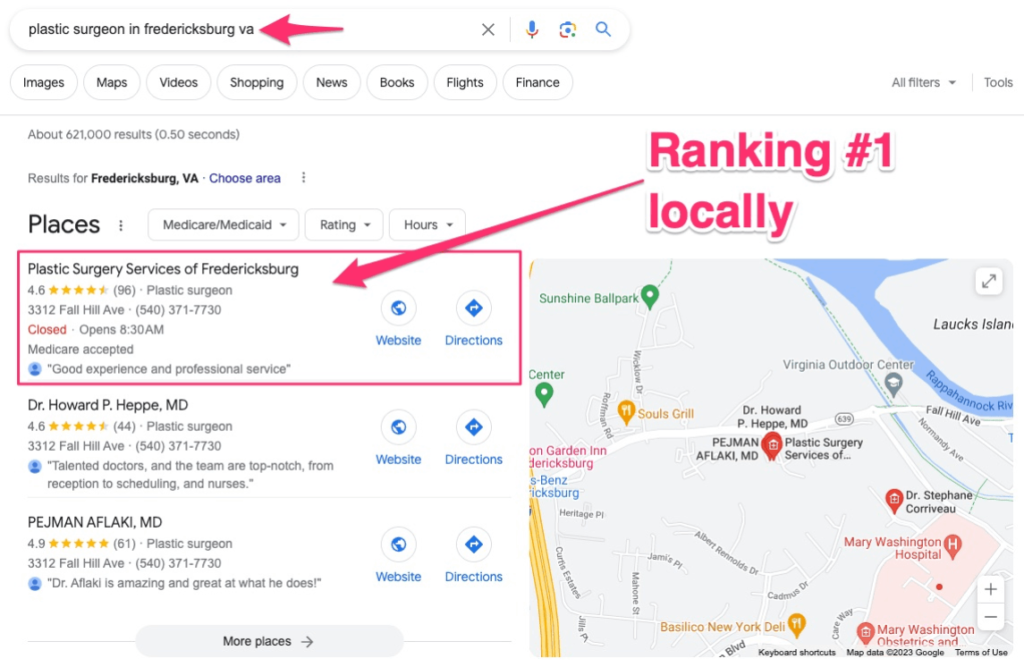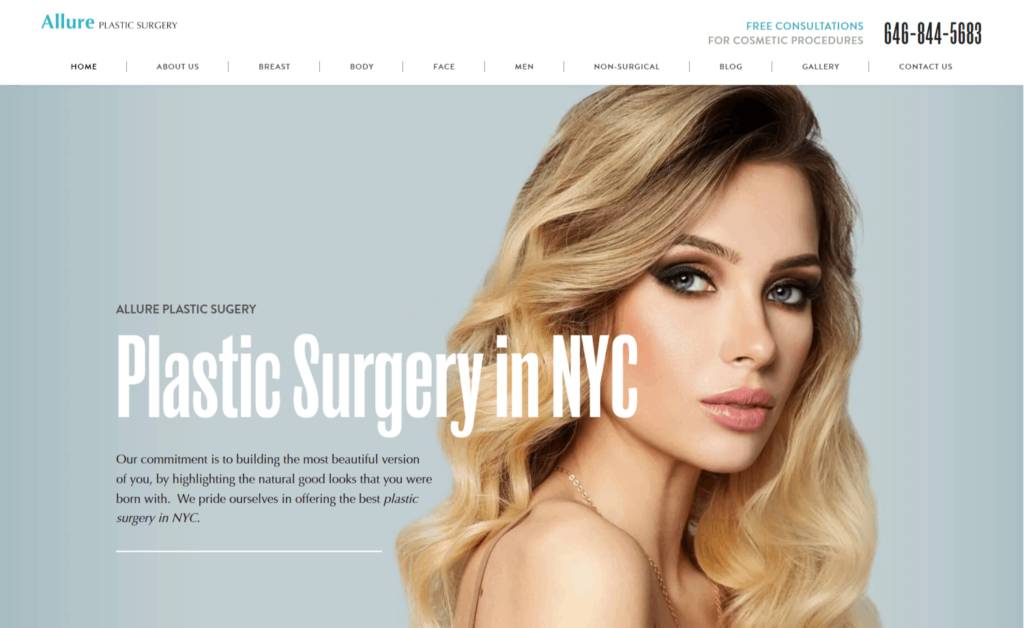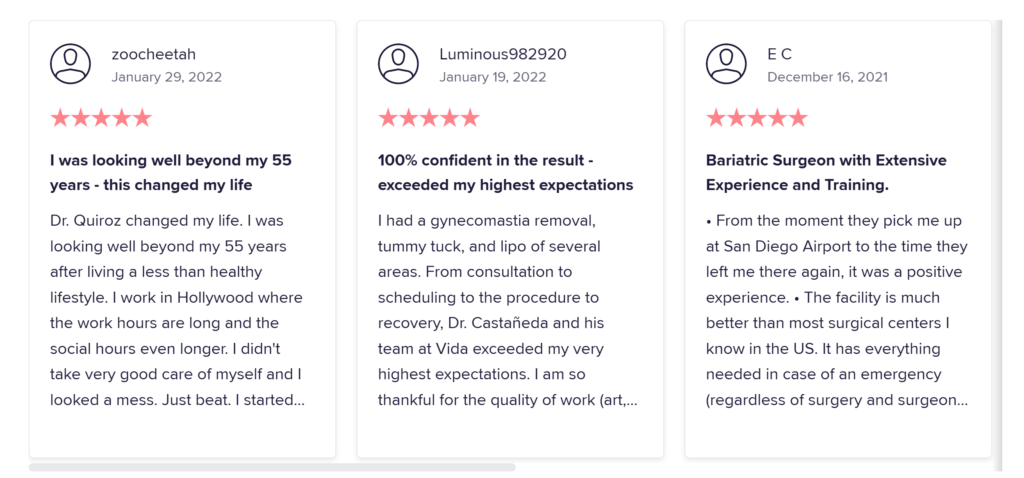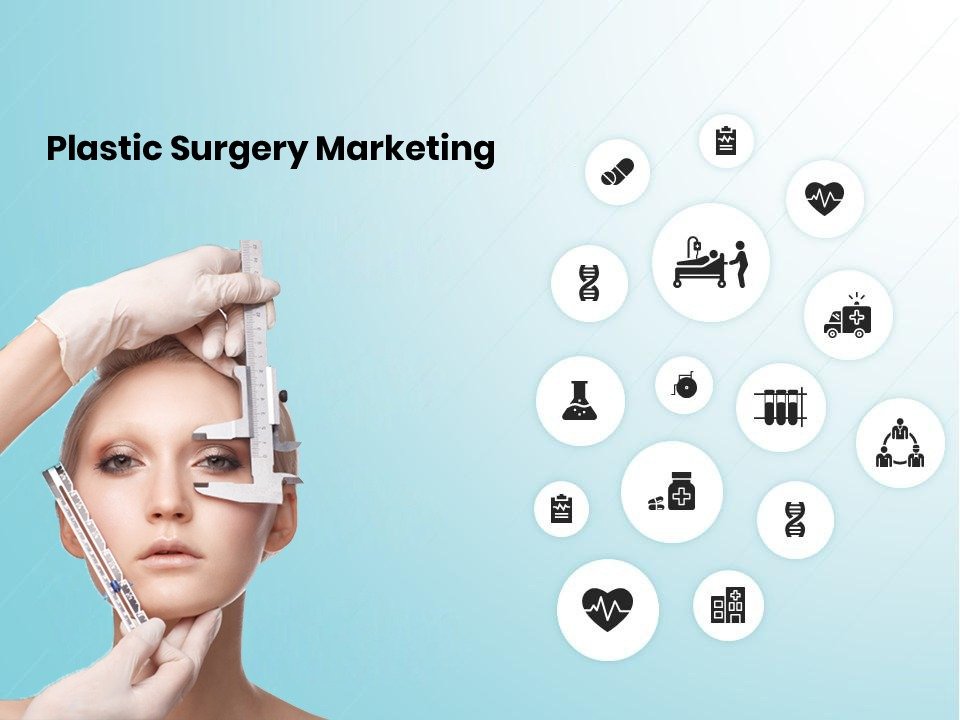Introduction to Plastic Surgery SEO
What Is Plastic Surgery SEO?
If you’re in the aesthetic or cosmetic medical field, you already know competition is fierce. That’s where plastic surgery SEO steps in—it’s the secret weapon to getting your clinic or practice in front of the right eyes. But what exactly is it? In simple terms, plastic surgery SEO is the process of optimizing your website and online presence so that when someone searches for services like “rhinoplasty near me” or “best facelift surgeon in NYC,” your website shows up at the top of Google’s results.
Think of plastic surgery SEO as your online referral network, only way bigger and way more powerful. When done right, it doesn’t just bring traffic to your site—it brings the right kind of traffic. These are people actively searching for services that you provide, people who are ready to book consultations and make decisions.
In 2025, SEO for plastic surgeons is no longer optional. It’s a necessity. Patients are smarter, more tech-savvy, and expect polished, professional online experiences. Google is also smarter—it’s using AI to interpret search intent, page quality, user experience, and more. Your SEO strategy needs to keep up.
This means you can’t just stuff keywords into your content and hope for the best. You need to be strategic, consistent, and up-to-date with the latest practices. And this guide is here to walk you through every part of that process.
Whether you’re just starting out or you’re a seasoned surgeon looking to grow your practice, plastic surgery SEO can be your game changer.
Why SEO for Plastic Surgeons Matters More Than Ever in 2025
The landscape of digital marketing is always evolving, but in 2025, things have shifted dramatically. Patients no longer rely on yellow pages or even word-of-mouth like they used to. They turn to search engines—especially Google—for everything. And if your practice isn’t showing up in those top results, you’re basically invisible.
Let’s put it into perspective: More than 90% of searchers never go past page one of search results. That means if you’re not there, your competitors are reaping all the benefits. That’s why SEO for plastic surgeons is critical—because it gives you visibility, authority, and trust in a saturated marketplace.
And it’s not just about getting people to your site. It’s about getting the right people. Someone who searches “breast augmentation cost near me” isn’t casually browsing—they’re likely ready to consult. That’s a high-intent lead you want to capture.

Additionally, 2025 brings new technologies like voice search, visual search, and AI-driven content recommendations. All of these rely on well-structured, keyword-rich, relevant content—aka, the core of plastic surgery SEO.
Ignoring this isn’t just risky—it’s revenue suicide. That’s why mastering SEO is no longer a luxury for surgeons. It’s a business imperative.
Understanding Search Engine Algorithms in 2025
Key Updates in Google’s Algorithm
Every year, Google rolls out updates to its algorithm, and 2025 has been no exception. This year, the focus has shifted toward experience, expertise, authority, and trustworthiness (E-E-A-T) even more than before. For plastic surgeons, this means your credentials, content, and online reputation need to shine.
Google is now using advanced AI, like its Gemini engine, to interpret user intent at an incredibly deep level. It’s not just about what keywords appear on your page—it’s about how well your content answers the searcher’s question, how long they stay on your site, and whether they engage with your content.
For plastic surgery SEO, this means quality beats quantity. Gone are the days when you could rank with thin blog posts or keyword stuffing. You now need detailed, helpful, and engaging content that positions you as the expert.
Plus, Google’s algorithm is placing more weight on local SEO signals. That means your Google Business Profile, local citations, and proximity to the searcher can all influence your rankings. If you’re a plastic surgeon in Miami, you want Google to know that loud and clear.
How These Changes Impact Plastic Surgery SEO
So, what does all this mean for your practice’s SEO strategy? First off, you need to ensure your website is optimized not just for keywords but for real user experience. That means mobile optimization, fast loading speeds, and intuitive design.
Also, reviews matter now more than ever. Google is pulling review data and integrating it into rankings and featured snippets. If your competitors have more five-star reviews than you, they’re probably outranking you too.
And let’s not forget voice search. Patients are increasingly using voice assistants to ask things like “What’s the recovery time for a facelift?” or “Best tummy tuck surgeon near me.” If your content isn’t structured properly or lacks conversational phrasing, you’re missing out.
Lastly, semantic search means Google understands variations of your keywords. So while you should definitely include “plastic surgery SEO” and “SEO for plastic surgeons,” you also need to write naturally and comprehensively around those terms.
Setting the Foundation with a Strong Website
Mobile Optimization and Speed
In 2025, if your website isn’t lightning-fast and mobile-friendly, it’s like having your plastic surgery clinic in the middle of the desert—nobody’s going to find you. One of the biggest ranking factors in plastic surgery SEO today is how quickly and seamlessly your site performs on mobile devices. With more than 70% of patients now browsing for services via smartphones, your online presence must cater to their habits.
Let’s break it down: a slow-loading website not only frustrates users but also signals to search engines that your site isn’t providing a good user experience. Google’s Core Web Vitals now directly influence rankings, focusing on metrics like load time, interactivity, and layout shift. If your page takes longer than 3 seconds to load, you’re likely losing half your potential patients before they even see your services.
SEO for plastic surgeons hinges on technical performance. To win in 2025, you must compress images, leverage browser caching, and minimize JavaScript where possible. Use a responsive design that adjusts perfectly to various screen sizes, ensuring a flawless experience whether a user is on an iPhone, Android tablet, or laptop.
There’s also AMP (Accelerated Mobile Pages), which, although debated in its necessity, can enhance mobile performance significantly if implemented correctly. This isn’t just technical fluff—it’s foundational for effective plastic surgery SEO. A fast, mobile-optimized site builds trust, encourages longer visits, and drives conversions. Remember, if patients are frustrated with your website, they’ll assume the same about your services.
Secure and User-Friendly Design
Imagine visiting a plastic surgeon’s website only to be greeted with a security warning or cluttered navigation—instant red flags, right? That’s why having a secure, user-friendly site isn’t just best practice; it’s crucial for dominating SEO for plastic surgeons.
First up, HTTPS. If your site isn’t secured with an SSL certificate, Google will warn users that your site is unsafe. That’s a conversion killer. A secure website builds trust—not just with visitors, but also with search engines. Security is now a top SEO signal.
Next is design. A user-friendly site is easy to navigate, intuitive, and engaging. Think clear menus, visible contact information, easy-to-read fonts, and a clean layout. Don’t clutter your homepage with medical jargon or flashy animations. Your visitors are likely stressed or anxious; your job is to make things smooth and welcoming.
Use heatmap tools like Hotjar to track how users interact with your site and identify problem areas. Fixing these improves UX, which leads to better engagement metrics—key factors in plastic surgery SEO success.
Oh, and don’t forget accessibility. Your site should work for users with visual impairments or disabilities. Use alt-text, proper contrast, and screen-reader-friendly structures. It’s not just ethical—it’s smart SEO.
Read Alsi : SEO for Doctors: Proven Tactics to Rank #1 and Grow Your Practice in 2025
Importance of Local SEO for Plastic Surgeons
Here’s the deal: most people looking for a plastic surgeon want someone nearby. That’s why local SEO is a goldmine for plastic surgery clinics. You could have the best website in the world, but if it doesn’t show up when someone searches “plastic surgeon near me,” you’re missing out on serious revenue.
Start with your Google Business Profile (formerly Google My Business). This is your storefront on the search engine, and it needs to be fully optimized—complete with photos, accurate NAP (name, address, phone), services, and business hours. The more detailed, the better.

Then there are local citations. These are listings on sites like Yelp, Healthgrades, and Zocdoc. Consistency across these platforms is key. If your address or phone number varies even slightly, Google gets confused and your rankings suffer.
Don’t ignore geo-specific keywords like “Miami facelift surgeon” or “Beverly Hills rhinoplasty.” These should be sprinkled naturally throughout your site—on landing pages, blog posts, and meta descriptions. This hyper-targeted approach makes your practice visible in the exact areas where patients are searching.
And let’s not forget about reviews. Positive Google reviews play a massive role in SEO for plastic surgeons. Encourage happy patients to leave feedback and respond to them with gratitude. Local SEO is all about trust and relevance—and nothing builds both like glowing testimonials from people in your area.
Keyword Strategy That Works in 2025
How to Choose the Right Keywords
Let’s face it—keywords are still king in the world of plastic surgery SEO, but the game has evolved. It’s no longer just about stuffing “plastic surgeon” 100 times into a page. It’s about choosing high-intent, relevant, and specific keywords that mirror what your ideal patient is searching for.
Start with keyword research tools like Ahrefs, SEMrush, or Ubersuggest. Look for terms with decent search volume but manageable competition. “Facelift surgeon Los Angeles” might be tough to rank for, but “deep plane facelift Beverly Hills” gives you a better chance to dominate a niche query.
You also need to identify buyer intent. Keywords like “what is a facelift” signal research mode, while “best facelift surgeon near me” means someone is ready to book. Build your content strategy to address every stage of the buyer’s journey, but focus heavily on those high-intent keywords.
Use modifiers like “top,” “certified,” “affordable,” and “board-certified” to attract more qualified traffic. These terms may seem minor but they have a big impact on click-through and conversion rates.
Using “Plastic Surgery SEO” and “SEO for Plastic Surgeons” Effectively
Your focus keywords—plastic surgery SEO and SEO for plastic surgeons—are not just the backbone of this article; they’re the lifeline of your digital marketing strategy. Use them intentionally and naturally throughout your content. This includes headings, subheadings, meta descriptions, alt text, and URLs.
Don’t cram them into every sentence. Instead, aim for variations and semantic alternatives like “plastic surgeon SEO marketing” or “cosmetic surgery SEO strategy.” Google’s algorithm is smart enough to understand related terms and group them together for ranking purposes.
And don’t forget about your homepage and service pages—these are prime real estate for placing your focus keywords. Embed them into your CTAs (call-to-actions), use them in FAQs, and integrate them into your blog posts. The more consistent and strategic you are, the more weight Google will give those terms.
Leveraging Long-Tail Keywords for Better Reach
In 2025, long-tail keywords are more powerful than ever. Why? Because searchers are getting more specific with what they want. Someone might not just search for “nose job,” but rather “revision rhinoplasty for deviated septum in Austin TX.”
These highly detailed, longer queries tend to have lower competition and higher conversion rates. That’s a win-win in the world of plastic surgery SEO. To find long-tail gems, look at “People Also Ask” sections in Google, explore Reddit forums, or use tools like AnswerThePublic.
Create content that speaks directly to these queries. A blog post titled “Top 5 Questions About Revision Rhinoplasty Recovery” will not only rank but also establish your expertise. You’ll attract more qualified traffic and increase your authority in your niche.
The best part? Long-tail keywords often lead to voice search optimization. Since people speak differently than they type, your natural-sounding long-tail content will show up in Siri or Alexa search results too—an essential advantage in SEO for plastic surgeons going forward.
Content Marketing for Plastic Surgeons
Blogging Strategies That Drive Traffic
Let’s get one thing clear—blogging is not dead. In fact, in 2025, it’s thriving, especially when it comes to plastic surgery SEO. Why? Because consistent, valuable blog content shows search engines that your site is active, authoritative, and answers users’ burning questions. And in a world where Google’s algorithm thrives on E-E-A-T (Experience, Expertise, Authoritativeness, and Trust), blogging is your golden ticket.

But here’s the catch—random, generic blogs won’t cut it. You need targeted, SEO-rich posts that speak to your potential patients. Think blog titles like:
- “How Long Does it Take to Recover From a Tummy Tuck?”
- “Top 10 Questions to Ask Your Plastic Surgeon Before Breast Augmentation”
- “Facelift vs. Mini Facelift: Which One is Right for You?”
Each blog should target specific long-tail keywords and naturally include your focus phrases like plastic surgery SEO and SEO for plastic surgeons. And we’re not talking short blurbs—each post should be 1000–1500 words minimum to provide real value and signal quality to Google.
Use storytelling, patient experiences, and your professional insights to craft compelling posts. Include visuals—before-and-after photos, charts, even embedded videos. Break up the text with subheadings, bullet points, and internal links to keep readers engaged and improve time-on-site metrics.
When done right, your blog becomes a traffic-driving machine. It fuels your email newsletters, gives you content to share on social media, and helps convert cold traffic into consultation-ready leads. This is where SEO for plastic surgeons truly begins to pay off.
Video Content and Before-After Showcases
If a picture is worth a thousand words, a video is worth a thousand patients. That’s the power of video content in 2025—especially for plastic surgeons. Potential patients want to see results, hear your voice, and feel like they can trust you before they ever book a consultation. That’s where visual storytelling becomes an essential part of plastic surgery SEO.
Start with before-and-after transformation videos. These are huge trust builders and rank well in both Google and YouTube searches. Use proper lighting, get patient consent, and add captions and context to every clip. These videos can be embedded into your website, blog posts, landing pages, and even shared across social platforms for max exposure.
Next, think about educational video content. Create short, informative clips like:
- “What to Expect During Liposuction Recovery”
- “Breast Implant Types Explained in 2 Minutes”
- “How to Prepare for Your First Plastic Surgery Consultation”
These videos target informational keywords and build your authority as an expert. Plus, they dramatically increase time spent on your site—a positive ranking factor for SEO for plastic surgeons.
Don’t forget to optimize your video titles, descriptions, and tags with focus keywords like plastic surgery SEO. Use platforms like YouTube and Vimeo, but always embed the videos back on your site to keep traffic flowing where it counts.
Creating High-Quality Service Pages
Think of your service pages as digital salespeople—they need to be clear, persuasive, and optimized to perform. Each procedure you offer should have its own detailed, keyword-optimized page. This is where many surgeons drop the ball, simply listing “facelift” or “liposuction” with two lines of text. In 2025, that’s just not good enough.
Each service page should be at least 800–1000 words and include:
- A compelling introduction
- Detailed procedure explanation
- Recovery and aftercare details
- FAQs specific to that service
- Strong calls-to-action (CTAs)
- Real patient testimonials
This helps not only with plastic surgery SEO, but also builds trust with potential clients. Use your focus keywords in headlines, image alt-tags, meta descriptions, and URL slugs. And don’t forget about semantic variations—like “cosmetic nose surgery” for “rhinoplasty” or “breast enhancement procedure” for “augmentation.”
Also, structure your service pages using H2 and H3 headings to make them scannable. Patients often skim content before reading deeper. Good structure helps with that and makes Google’s job easier too.
Finally, add visuals—diagrams, before-and-after galleries, even interactive sliders. Not only do they enhance UX, but they also reduce bounce rates and improve ranking signals. Done right, your service pages will become SEO magnets.
On-Page Optimization Essentials
Optimizing Title Tags, Meta Descriptions, and Headers
Your title tags and meta descriptions are your digital storefront signs—they’re the first impression searchers see in Google’s results. Get them wrong, and you’ll get scrolled past. Get them right, and you’ll see a huge jump in clicks and rankings.
For plastic surgery SEO, each page must have a unique title tag that includes your focus keyword, preferably near the beginning. For example: “Facelift Surgery in Houston | Expert Plastic Surgeon | Book Today.” That title tells Google (and users) what the page is about and where the service is offered.
Next up, meta descriptions. While they don’t directly influence rankings, they do affect click-through rates. Use them to summarize the page in a compelling way. Mention your USP (unique selling proposition), include your focus keyword like SEO for plastic surgeons, and always add a call-to-action.
Headers (H1s, H2s, H3s) are essential for both SEO and readability. Use them to break up content, introduce key sections, and insert keywords naturally. Avoid using the same H1 for every page—each one should be distinct and relevant.
This structured approach helps search engines understand your content and gives users an easier reading experience. Win-win.
Strategic Placement of Focus Keywords
Overusing your keywords is just as bad as not using them at all. The key in 2025 is strategic placement—integrating your focus keywords into key SEO elements without sounding robotic.
Here’s a basic checklist:
- URL Slug: /plastic-surgery-seo-guide-2025
- Title Tag: Include “plastic surgery SEO” or “SEO for plastic surgeons”
- Meta Description: Mention both focus keywords at least once
- H1 and H2 Headings: Use exact matches and variations
- First 100 Words: Always mention your main keyword early
- Alt Text for Images: Describe the image using related terms
- Anchor Text: Link to related pages using natural phrases
Aim for a keyword density of around 1–2%. This keeps your content optimized but avoids spammy penalties. And remember—write for humans first. If it doesn’t sound natural when read aloud, rewrite it.
When done right, strategic keyword placement makes your site more discoverable and improves your plastic surgery SEO performance dramatically.
Read Also : The Ultimate Guide to Mastering Med Spa Marketing in 2025
Image Optimization and Schema Markup
Images are more than just visual flair—they’re powerful SEO tools when optimized properly. Every image you upload should be compressed to minimize load times and include alt text that describes what the image shows. This not only helps with accessibility but also boosts your chances of appearing in Google Image Search.
For example, instead of naming an image “IMG1234.jpg,” use “facelift-before-after-female-40s.jpg.” Add descriptive alt text like “Before and after results of a facelift performed by a plastic surgeon in Los Angeles.”
And then there’s schema markup—an underused gem in the world of SEO for plastic surgeons. This structured data helps search engines understand your content better and can lead to rich results like star ratings, FAQs, or operating hours in search listings.
Use schema types like:
MedicalBusinessPlasticSurgeryReviewFAQPageVideoObject
Implementing schema via JSON-LD makes your site more attractive in search results, which improves CTRs and signals authority. It’s one of those little things that can make a big difference—exactly what you want in a tight SEO market.
Technical SEO for Plastic Surgery Websites
Fixing Crawl Errors and Broken Links
Here’s a truth bomb: even the most beautiful, keyword-optimized website will fail in plastic surgery SEO if search engines can’t crawl it. Crawl errors and broken links are silent killers in your SEO strategy. They confuse search engines, frustrate users, and tank your rankings.
To stay ahead in 2025, use tools like Google Search Console to monitor for crawl errors. These are red flags telling Google, “Hey, this page isn’t working right.” Whether it’s a 404 error, server issue, or redirect chain, you need to fix these ASAP. Every error left unresolved is a missed opportunity for visibility.
Then there’s the issue of broken links. Not only do they degrade user experience, but they also signal poor site maintenance. Imagine a patient clicking on a link to your “Before & After Gallery” and landing on an error page. That’s a trust-breaker—and Google notices.
Use platforms like Screaming Frog or Ahrefs to audit your site regularly. Replace broken internal links, redirect outdated pages, and clean up your backlink profile. These small fixes can yield big improvements in SEO for plastic surgeons.
A well-crawled, error-free site is the foundation of all your optimization efforts. Think of it as your digital operating room—clean, efficient, and ready for performance.
Implementing Structured Data
Structured data, also known as schema markup, is like giving Google a cheat sheet for your website. It helps search engines understand the content of your pages on a deeper level. And in 2025, using structured data is a must-have for effective plastic surgery SEO.
Want your star ratings to appear in search results? Use Review schema. Want patients to see your clinic hours, location, and pricing range at a glance? Use MedicalClinic and LocalBusiness schemas. The more data you provide, the better Google can represent you in search results.
This doesn’t just help rankings—it increases your click-through rate (CTR) by making your listings more attractive. Rich snippets stand out visually, which means more eyeballs and more bookings.
Set up structured data using JSON-LD format (Google’s preferred method). Tools like Google’s Rich Results Test and Schema.org can help you get started. Just remember to stay current—structured data evolves quickly, and staying up-to-date is key to leveraging its full power.
When it comes to SEO for plastic surgeons, this is a high-impact move that too many overlook.
Creating an XML Sitemap
Think of an XML sitemap as a roadmap for search engines. It tells Google and Bing exactly which pages are on your website, how they’re organized, and when they were last updated. In a competitive niche like plastic surgery, having a well-structured sitemap is a foundational step in your plastic surgery SEO strategy.
Without a sitemap, search engines might miss your newest blog posts or fail to index hidden service pages. That’s lost traffic. Tools like Yoast SEO (for WordPress) or Screaming Frog can generate and update your sitemap automatically.
Once created, submit it through Google Search Console. Check for errors regularly and ensure that every URL in your sitemap leads to a functioning, optimized page.
A sitemap is more than a technical checklist—it’s your content’s front-line defense against invisibility.
Link Building and Authority Development
Guest Posting and Outreach Strategies
In 2025, building authority through backlinks is still one of the most powerful elements of plastic surgery SEO. Backlinks are like referrals from other websites—they tell Google that your site is trustworthy and valuable. But not all backlinks are created equal.
Forget shady directories or spammy forums. Focus on guest posting on reputable health, beauty, and lifestyle sites. Write expert articles or answer FAQs about plastic surgery, and include a link back to your website. This not only builds your backlink profile but also positions you as a thought leader.
Outreach is another key tactic. Connect with influencers, bloggers, and media outlets in your local area or niche. Offer to collaborate on articles, podcasts, or Q&A sessions. The more quality backlinks you earn, the more credibility you gain in the eyes of Google—and patients.
This type of SEO for plastic surgeons doesn’t deliver overnight results, but over time, it compounds into massive authority and visibility.
Local Backlinks and Medical Directories
While global backlinks help, local backlinks are gold for plastic surgeons. These are links from other websites in your geographical area—like local news sites, event sponsorships, or community organizations.
List your clinic in respected medical directories like RealSelf, Healthgrades, and Zocdoc. Make sure your information is consistent across all platforms—this improves both local SEO and patient trust.
Get involved in local events or offer expert opinions to local media outlets. These citations and mentions help Google associate your brand with your location, improving your local search performance.
When executed correctly, this strategy becomes a powerful way to combine plastic surgery SEO with community-building.
Social Proof and Testimonials
If you’re not leveraging social proof in 2025, you’re leaving money on the table. Patient testimonials, success stories, and before-and-after images are more than just trust builders—they’re powerful SEO assets.
Feature testimonials prominently on service pages and include schema markup so Google can display them in search results. Embed review snippets into your homepage, blogs, and FAQs.
Encourage patients to leave Google reviews post-treatment. Send a follow-up email with a direct review link. This builds credibility and boosts your rankings in local search—an essential piece of SEO for plastic surgeons.
Reviews and Online Reputation Management
Importance of Google Reviews
In the world of plastic surgery, reputation is everything. One negative review can do serious damage, while a portfolio of glowing testimonials can propel your practice to the top of local searches.
Google reviews are particularly powerful. They show up prominently in search results and influence both your rankings and conversion rates. A surgeon with 150 five-star reviews will always outrank one with only 10, even if their websites are similar.
Make asking for reviews a standard part of your post-op process. Make it easy with direct links and mobile-friendly platforms. And always respond—whether the review is glowing or critical.
This active engagement shows Google that you care, and more importantly, shows potential patients that you listen.

Encouraging Patient Testimonials
Patient testimonials are social proof gold. They not only convince future patients but also contribute to your plastic surgery SEO efforts when properly embedded on your website.
Ask satisfied clients for a short testimonial. Video is best, but written quotes with photos also work well. Create a “Success Stories” page to showcase your work. Use alt-text and schema markup to boost their SEO value.
These real-life stories build trust, reduce bounce rates, and help establish your authority—all critical for high-converting, SEO-rich websites.
Managing Negative Reviews Professionally
No one likes bad reviews, but they’re inevitable. What matters is how you respond. Don’t ignore them or get defensive. Instead, reply professionally, show empathy, and offer to resolve the issue offline.
A well-handled negative review can actually build credibility. It shows you’re human, responsible, and care about patient outcomes.
And yes—your response can influence rankings too. Google looks at review responses as part of their engagement and quality metrics. So be proactive, professional, and polite.
Conclusion
Mastering plastic surgery SEO in 2025 is no small feat, but it’s also not impossible. With the right mix of technical foundations, killer content, smart keyword strategies, and an unshakable reputation, your practice can dominate local search and consistently attract high-value patients.
The world of SEO for plastic surgeons is evolving rapidly—voice search, AI content, E-E-A-T, and user intent are leading the charge. By following the best practices outlined in this guide, you’re not just surviving—you’re thriving in one of the most competitive niches in digital marketing.
Stay consistent. Stay informed. And most importantly—stay visible.








[…] Read Alos : Plastic Surgery SEO Strategies for 2025: Dominate Local Search Results […]